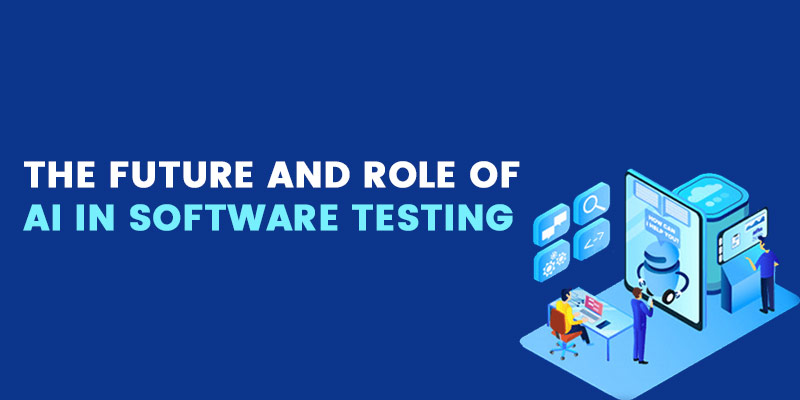Agile methodology in software testing has become a crucial part of the application lifecycle. It made significant changes in software development, QA, and Testing. Moreover, it is prominently used for software development to deliver a high-quality product and to improve customer experience.
If you want to become a software tester, you can join Software Testing Training in Chennai, which will help you have an in-depth understanding of software testing life models such as Waterfall model, V model, Incremental model, RAD model, Agile model, Iterative model and Spiral model.
In this blog, we dive deep into the Agile methodology process, the types of Agile methodologies and what is Agile methodology in software testing.
What is Agile methodology in software testing
In software development, an Agile methodology is an approach that incorporates the need and solution generated through the cooperative efforts of software teams and their clients or end users. If the software team utilizes Agile Testing or Agile methodology, it does mean that only the software team is involved in Agile Testing. It is also necessary to understand that Agile Testing involves cross-functional Agile team- testers or quality assurance professionals, including team members with expertise in programming, business analyst, system administrator, customers or other members to deliver a high-quality product and high-quality code.
Agile differs from other software development methodologies like Waterfall in that it strongly emphasizes the individuals who perform the tasks and their interactions with each other. On Agile projects, solutions are developed through collaboration between self-organizing and cross-functional teams.
If you are interested to begin your career in the software testing field, you can join Software Testing Course in Chennai and acquire a profound understanding of Why Testing is essential, Agile methodology process, executing Test Cases, Defect Categorization and many other core concepts of software testing.
What is Agile Software Development?
To understand the Agile methodology process in-depth, you must comprehensively understand the methodology involved in Agile Testing. Agile Testing is an umbrella term because it incorporates various Testing different from traditional development techniques.
Now, we shall discuss the fundamental principles of Agile software development.
- Focus on delivering quality products before focusing on processes and tools
- Give priority to the piece of software.
- Continuous customer collaboration is more important than a set contract.
- Be adaptable to change rather than following a strict plan.
The goal of the Agile methodology is to adapt to change. Teams may use various frameworks, including Scrum or Kanban, but at its core is a collaborative process.
In a conventional development approach, team members might be divided according to the area they are working on, and components are gradually added to create a finished product. Continuous integration is essential to Agile; as a result, the entire team works together, and new features are continuously added. Agile testing methods are required because they lead to a new software development life cycle.
What are Agile Testing techniques?
Agile Testing is the best testing technique in the software development lifecycle because Testing is integrated directly into the development process to evaluate the bugs in the early stage. As a result, the tester can determine issues at every stage in the development process and help drive the product quickly towards release.
Traditional Testing Method vs. Agile Software Testing
- Before delivering the product to the customers, the tester will take various steps to break it first and fix the necessary changes.
- In the traditional waterfall method of development, the sequence of events is:
- Requirements > System Design > Implementation > Integration and Testing > Deployment of System > Maintenance.
- The testing team doesn’t get the product until late in the development cycle because, with this method, the subsequent step doesn’t start until the preceding one is finished.
- It is a challenging phase in software testing because if the tester finds any bugs at this stage, it will be difficult to debug the issue and will require some expenses.
- At this stage, the tester may get various suggestions and feedback from other team members and customers. So, the tester faces problems in integrating the proper test.
- At this phase, the tester will wait till the process or product narrows down the Waterfall. After this, with the aid of skills, they decide whether to kick back the process to the previous stage or take another step to solve the process development issue.
- The test team has access to the code whenever a new update is made and provides immediate feedback to the developers. A significant minority of end users and automated tests are included in these test cycles.
Software Testing Course in Chennai will help you have a comprehensive understanding of Agile methodology in software testing, Agile techniques, Agile testing strategies and Software Testing Life Cycle.
We shall discuss the types of Agile methodologies in software testing, Agile techniques and Agile framework types.
Types of Agile methodologies in software testing
The Agile methodology encompasses various testing processes for software development. We shall go through the most popular Agile testing methods in detail. While there isn’t a single method that works perfectly for every product, these frameworks are helpful as a base from which to develop a unique strategy:
Acceptance test-driven development – The cooperative nature of Agile Testing is embraced by test-driven development, which brings customers, developers, and testers to create acceptance tests from the customer’s perspective.
The associated functionality is only created once these tests have been created. With this kind of workflow, creating test cases is simple. This eliminates uncertainty from the process and lowers the possibility of expensive errors by providing developers with clear input into what customers want and how the product is utilized.
Behavior-driven development – BDD builds on and improves acceptance of test-driven and test-driven development. Using their structure, one can identify the right business outcomes and run tests based on those desired outcomes. Behavior-driven development has five steps:
- Define the behavior
- Formulate the step for each phase of development
- Run and fail
- Write the code to run the development process
- Run and pass
Exploratory Testing in Agile – Exploratory Testing is a cyclical process that moves from test design to test execution to analysis to learning before starting over.
Agile testers are compelled to make the most of their unique talents because they design the tests from scratch rather than following a script as they evaluate the product. Exploratory Testing gives testers the closest opportunity to interact with a product exactly as it will be seen “in the wild.” It allows testers to find bugs that would not be found using other testing techniques and is a great way to determine whether you have any working software quickly.
Session-Based Testing – Session-based Testing enhances and improves exploratory Testing as BDD does for ATDD. Exploratory Testing’s greatest asset is the creativity of its practitioners, but it is also the most significant disadvantage.
By adding structure, session-based Testing makes an effort to address this. A charter is first created before a test session is started. Moreover, continuous testing sessions primarily concentrate on a single charter. After reporting on the entire session, the manager receives a debriefing. The additional framework makes sure that every aspect of the product is thoroughly tested and prevents backlogs from accumulating in any one area.
If you are seeking for the best platform for learning software testing, enrol in Software Testing Course in Bangalore and learn how to execute test cases, types Of Testing-Functional and Non-Functional Testing, Install/Uninstall Testing and many other implementations of test cases.
Advantages of Agile Testing and Agile Techniques
Agile Testing can be classified into three crucial steps:
- The happier team
- A higher-quality product
- Faster delivery
But achieving that trifecta is worth the time and effort spent creating a practical Agile testing framework.
A higher-quality product
- The Agile methodology helps the tester detect bugs quicker in the development process.
- The primary benefit of Agile is that it gives continuous feedback.
- The bugs are determined and eradicated after they are created.
- Instead of waiting until a product is complete, each iteration is thoroughly tested and debugged as it is being developed.
- Testers gain in-depth product knowledge and provide accurate feedback, both ongoing and early test results.
- The tester will do a comparative analysis of insight with customer feedback, depending on the testing methodology employed, to assist developers in producing a better product.
Fast delivery
- In the waterfall testing process, the software may take one month or year to release the product into the market. As a result, the product will surely be irrelevant to the customer or market at the release time.
- Agile testing methodology lessens the development cycle and frequently collects customer feedback, ensuring that the product is developed to be as market-driven as possible and delivered to customers as soon as possible.
A happier team: Agile methodology in software testing demands close communication between all team members, fostering a more joyful, engaging, and effective work environment. Developers, testers, and customers collaborate to produce the best product and significant value.
If you are Bangalore-based students interested in learning software testing,you can join Software Testing Training in Bangalore, which will help you in understanding Test Strategy & Test Planning and how to integrate Agile methodology in software testing.
Agile Testing Strategy
Dedication and following these three best techniques will help you overcome each of these pitfalls. Determining when Agile Testing shouldn’t be used is the first step towards successful Agile Testing.
Agile Testing can be blindly adopted, which could lead to a product that is unstable and prone to crashes.
The following suggestions are for cases in which Agile Testing may not be the most effective approach:
- When the project’s parameters are well-defined and highly improbable to change
- When there is only one product owner or stakeholder and few requirements for the project
- When no one on your team has the broad, in-depth skills required to conduct Agile Testing
- When the client insists on conducting Testing using the conventional waterfall methodology
When you’ve decided that Agile Testing will profit your team, your product, and your clients, you should take the time necessary to choose the best methodology and develop a testing process based on the four-quadrant model.
Testers should work with the developers to prevent them from being exempted. They should frequently meet with them to discuss what they are working on and allow them to review the created tests. Iterative methods can ensure faster team contact during the testing process.
Testers can create opportunities by providing insightful feedback based on interactions with developers and customers. To put it briefly, they must become indispensable for developers to do their jobs well.
How to Make Agile Testing successful
The most effective way to ensure the accomplishment of Agile Testing for a product is to hire individuals who possess the key traits of an Agile tester and to create a culture of self-organization and independent thought throughout the entire company.
Now that you have understood the Agile methodology process, type of Agile methodologies, and techniques, what is Agile methodology in software testing? So to begin your career as a software tester, you can enrol in a Software Testing Course in Bangalore and explore your career in the software testing field.



